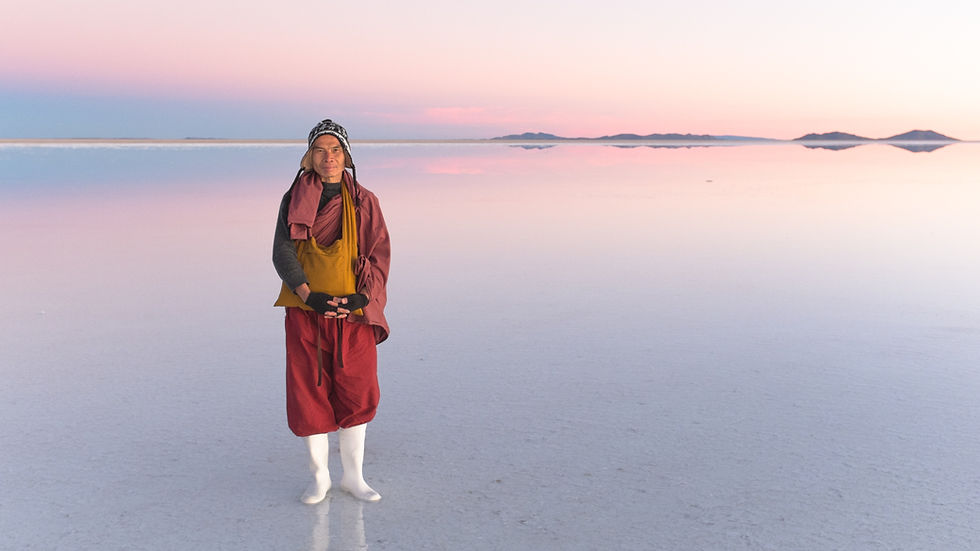Living at High Altitude: How Altitude Shapes the Culture of Bolivia?
- Marcy Tapia

- Oct 10, 2024
- 3 min read

Did you know that in Bolivia, altitude not only defines our landscapes but also our way of life? Much of the country is located over 3,000 meters above sea level, and this has shaped everything we do, from our customs to our beliefs. The altitude has made us who we are, and today we want to share with you how it has influenced our culture.
Sorojchi and the Remedies We’ve Always Used
If you’ve ever been to the altiplano, you’ve probably heard of “sorojchi” or altitude sickness. For us, it’s something we’ve lived with for generations. Our ancestors knew how to combat it long before pills existed. What’s the solution? The coca leaf. Chewing it or drinking it in tea is a practice that has been passed down through generations and remains part of our daily life, especially when someone arrives for the first time at high altitudes.
I remember when a friend visited La Paz. Feeling unwell due to the altitude, we offered her a cup of coca tea. She posted about it on social media, and her friends began to worry, thinking she was consuming cocaine. For us, the coca leaf is sacred and a symbol of our traditions, reminding us that what is healing for some can be misunderstood by others.
Our Beliefs: Ajayu and Pachamama
Altitude has also greatly influenced our beliefs. For example, in Bolivia, we have a deep reverence for Pachamama, our Mother Earth, who provides everything we need but also demands respect. The offerings we make, known as “challas,” are a way to thank the earth and maintain balance with nature. Additionally, we believe that mountains have spirits, called “Apus,” to whom we also offer gifts, especially in Andean communities. This is a way to remain connected to our sacred environment.
High-Altitude Cuisine
Our cuisine is also shaped by altitude. You’ve probably heard of quinoa or potatoes, right? These foods have been staples of our diet since ancient times. The potato, for example, is one of Bolivia's oldest crops, and here in the highlands, we have a very special method of preservation: chuño, which is dehydrated potato. We invented this because the cold climate and extreme conditions forced us to be creative to ensure we always had food, even in tough times.
Our Festivals, Marked by the Mountains
Another characteristic of our culture is our festivals. The Carnival of Oruro, for example, is one of the most important and is filled with symbols that come from our relationship with altitude. Dances like those of the devils or the morenos tell stories of the struggle between good and evil, reflecting how we live that duality between the divine and the earthly. These expressions originated in the highlands and show how we have adapted to living so close to the sky.
A Resilient Culture
Living at high altitude has made us resilient. Our clothing, the way we build our houses, and even our beliefs have adapted to survive in an environment that is not easy. For example, we wear alpaca sweaters that are incredibly warm, and our adobe houses withstand the strong winds of the Andes. Every detail in our lives is designed to help us face the challenges of altitude.
So, as you can see, altitude in Bolivia is not just a matter of geography. It has shaped our identity, marked our traditions, and made us a unique culture capable of thriving thousands of meters above sea level. And every time someone visits us, they can feel that special connection we have with our mountains and our sky.
.png)



Kommentarer